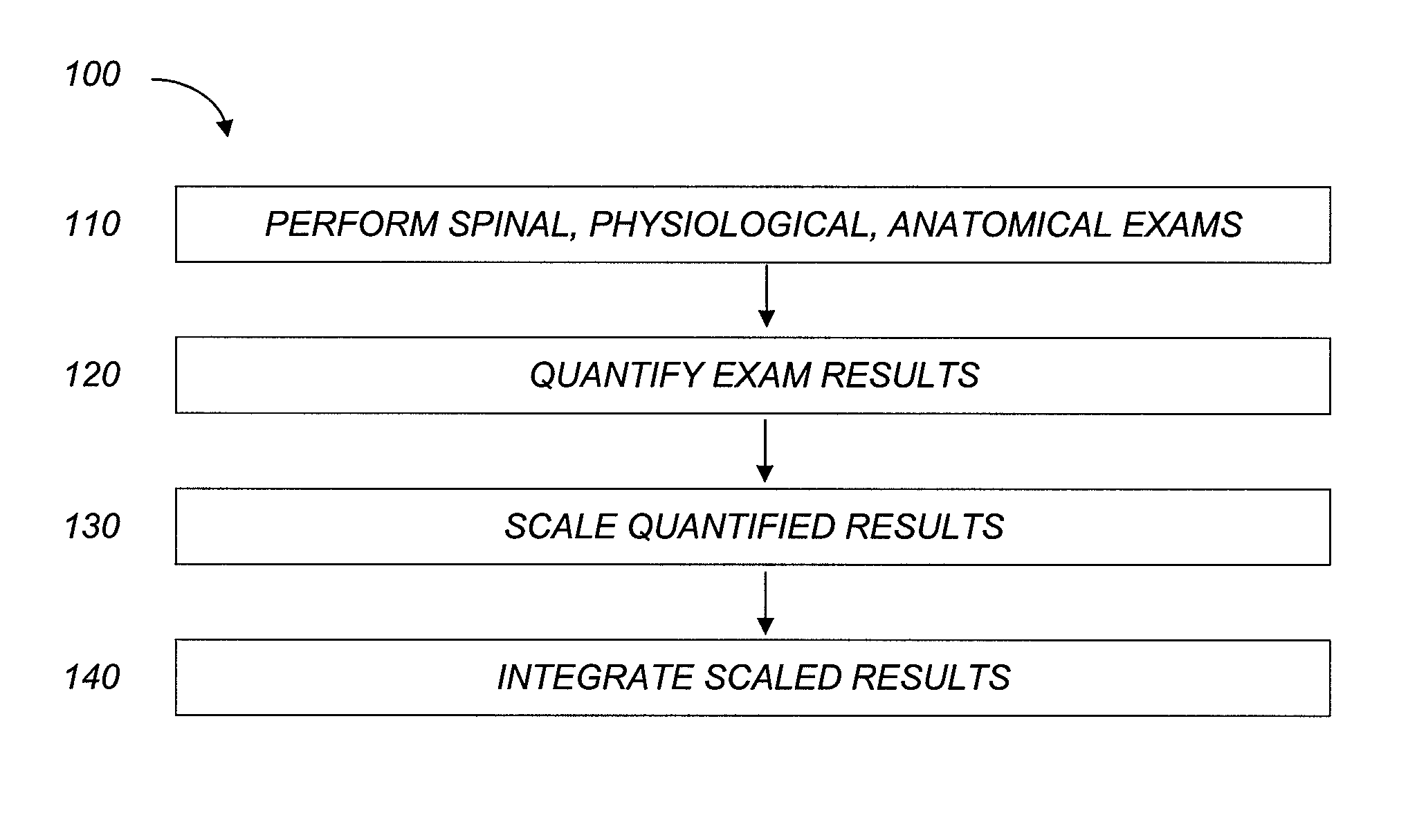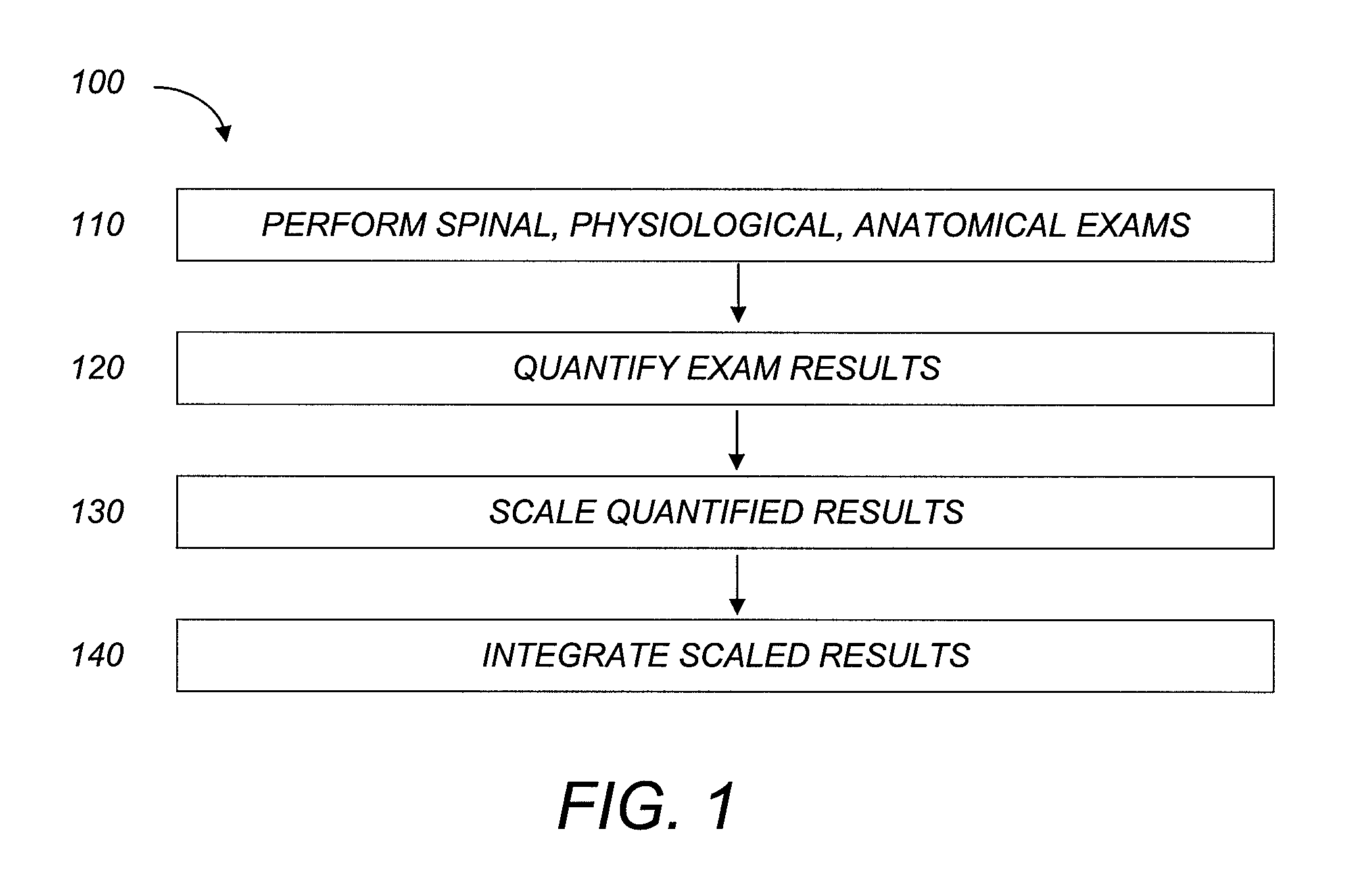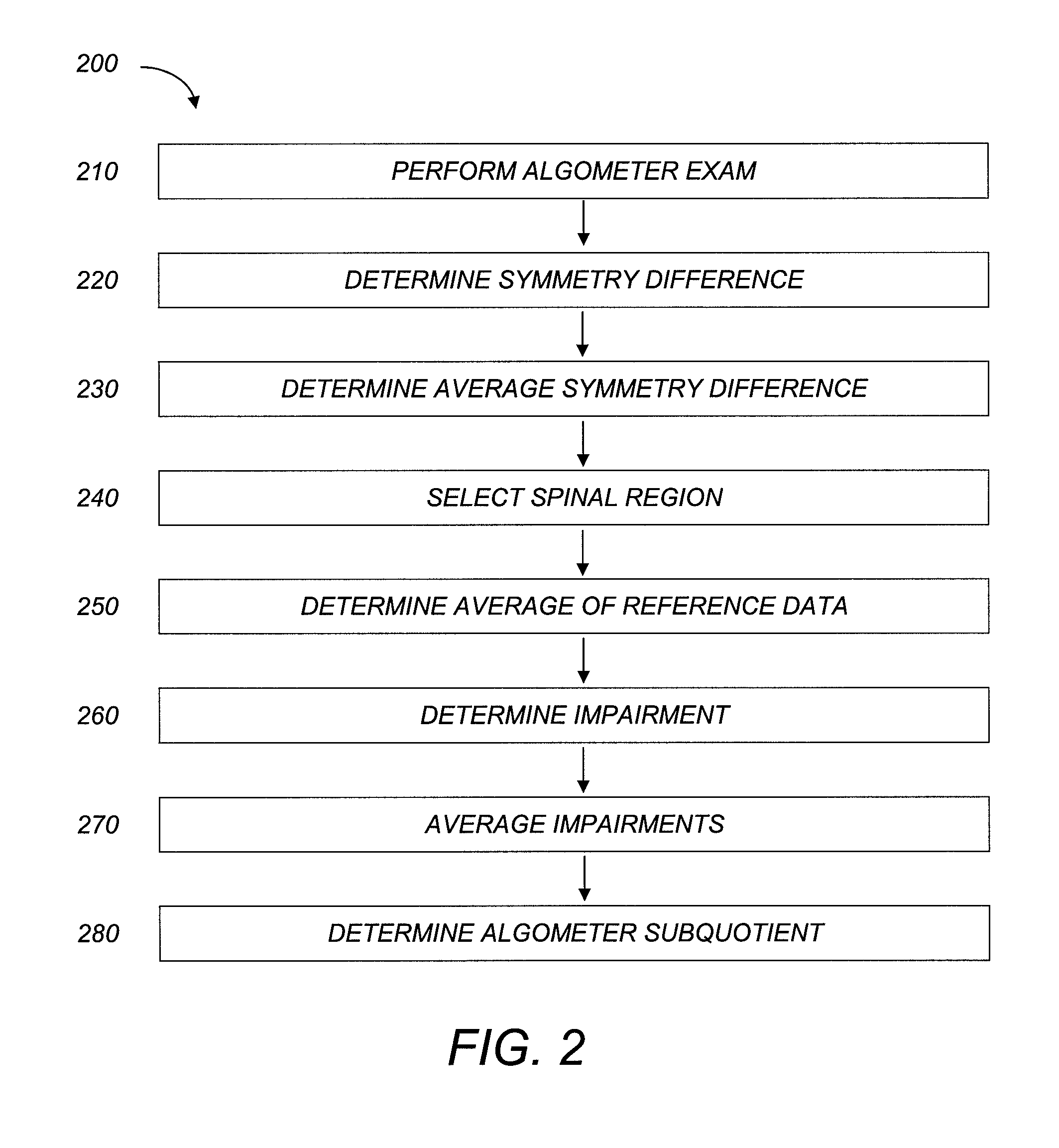Quantifying neurospinal function
a neurospinal function and quantitative technology, applied in the field of quantifying neurospinal function in humans, can solve the problem of inability to easily integrate the results of different diagnostic tests in order to build a complete picture of neurospinal function
- Summary
- Abstract
- Description
- Claims
- Application Information
AI Technical Summary
Benefits of technology
Problems solved by technology
Method used
Image
Examples
example 1
Spinal Algometry
Spinal Pain Mapping
[0028]An embodiment of a method 200 for determining an Algometer Subquotient is illustrated in a flowchart in FIG. 2. In this example, the Algometer Subquotient includes data on two aspects of the algometer examination: (1) the left / right symmetry of the examination, and (2) a comparison of the data to the reference data of the examination. Note that some embodiments of the Algometer Subquotient do not include reference data or symmetry values. The inclusion or exclusion of one of these types of data depend on factors known in the art, for example, the presenting symptoms of the patient, the clinical focus of the chiropractor, and the like. In such cases, the Algometer Subquotient reflects only the data used in its calculation. An Algometer Subquotient that does not include either left / right symmetry data or reference data is typically not used in determining an NSFI.
[0029]In step 210, an algometer examination is performed. In one type of algometer...
example 2
Spinal Range of Motion
Spinal Movement
[0037]In an embodiment of a Spinal Range of Motion (ROM) Subquotient described in this Example, a patient's observed range of motion is compared with reference data, for example, as provided in AMA Guides to the Evaluation of Permanent Disability, 5th Ed., the disclosure of which is incorporated by reference. Those skilled in the art will understand that other reference data is also useful in other embodiments.
[0038]FIG. 3 is a flowchart illustrating an embodiment of a method 300 for determining a Spinal Range of Motion Subquotient. In step 310, an examiner performs one or more range of motion examinations on a patient, for example, selected from standard range-of-motion examinations of the spine known in the art, for example, as described in the American Medical Association's Guidelines to the Evaluation of Permanent Impairment, 5th Ed., the disclosure of which is incorporated by reference. In step 320, relative range-of-motion values are determ...
example 3
Surface EMG
Paraspinal Muscle Tension
[0039]An embodiment of an electromyography (EMG) Subquotient described in this Example comprises the three scores from a Pattern Analysis of a patient: (1) Pattern Score, (2) Symmetry Score, and (3) Total Energy, which are described in U.S. Patent Application No. 60 / 793,208, filed Apr. 19, 2006, the disclosure of which is incorporated by reference, and a copy of which is filed herewith as EXHIBIT A. In the illustrated embodiment, the Pattern Score and Symmetry Score are already on a 0-100 scale, while Total Energy is on a different scale.
[0040]An embodiment of a method 400 for determining an EMG Subquotient for a patient is illustrated in FIG. 4. In step 410, a Pattern Score, a Symmetry Score, and a Total Energy are determined for a patient. In step 420, an EMG Subquotient is determined as provided in TABLE 1.
[0041]
TABLE 1Total EnergyEMG SubquotientTotal Energy ¾[0.6(Pattern Score) + 0.4(SymmetryScore)]50 ≦ Total Energy [¼ + 0.01(Total Energy)][0....
PUM
 Login to View More
Login to View More Abstract
Description
Claims
Application Information
 Login to View More
Login to View More - R&D
- Intellectual Property
- Life Sciences
- Materials
- Tech Scout
- Unparalleled Data Quality
- Higher Quality Content
- 60% Fewer Hallucinations
Browse by: Latest US Patents, China's latest patents, Technical Efficacy Thesaurus, Application Domain, Technology Topic, Popular Technical Reports.
© 2025 PatSnap. All rights reserved.Legal|Privacy policy|Modern Slavery Act Transparency Statement|Sitemap|About US| Contact US: help@patsnap.com



